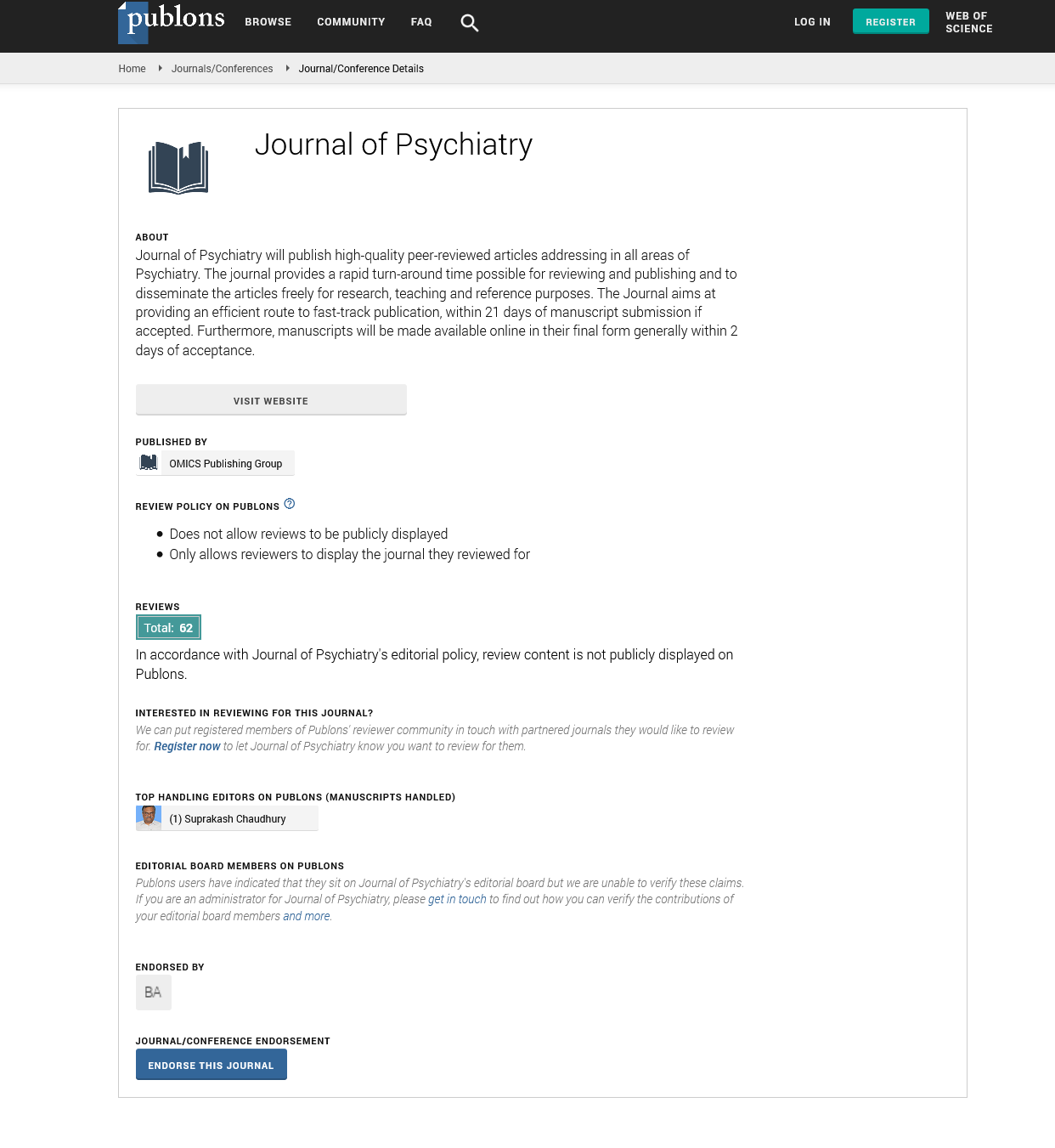PMC/PubMed Indexed Articles
Indexed In
- RefSeek
- Hamdard University
- EBSCO A-Z
- OCLC- WorldCat
- SWB online catalog
- Publons
- International committee of medical journals editors (ICMJE)
- Geneva Foundation for Medical Education and Research
Useful Links
Share This Page
Open Access Journals
- Agri and Aquaculture
- Biochemistry
- Bioinformatics & Systems Biology
- Business & Management
- Chemistry
- Clinical Sciences
- Engineering
- Food & Nutrition
- General Science
- Genetics & Molecular Biology
- Immunology & Microbiology
- Medical Sciences
- Neuroscience & Psychology
- Nursing & Health Care
- Pharmaceutical Sciences
Neurosurgical investigation: Can the intra-operative stimulation of the brain minimize the risk of neurological deficits in brain tumor surgeries
4th Global Congress on Neuroscience Psychiatry and Mental Disorder
November 18-19, 2024 | Paris, France
Anastasia Ervina Sela
National and Kapodistrian University of Athens, Greece
Scientific Tracks Abstracts: J Psychiatry
Abstract:
Classic brain surgeries require the application of general anesthesia for the patient. However, in some cases, the patient must be vigilant to achieve the best surgical result. Such cases mainly concern spatial damage to the brain in its noble structures such as the aesthetic-motor cortex and the cortical centers of speech. "On-alert" craniotomy in the intraoperative mapping of the cerebral cortex is superior to concomitant craniotomy in the rates of microsurgical resection, during hospitalization, and in the recovery time of surgical patients and speech therapies in the area. This allows the neurosurgeon to choose a safe passage for the lesion, allowing it to be removed as much as possible while minimizing the risk of neurological deficits. A recent survey conducted by a 15-member team of Health Professionals at a well-known Private Hospital in Athens (M.G.H) over 4 years found that of the 40 patients who underwent craniotomy, 31 had a good outcome and 9 had neurological problems after surgery. The research aimed to study cases with brain gliomas in the Roland area and in speech centers, the neurological investigation of the preoperative neurological condition with the postoperative course, and the outcome of the patients. Understanding the functional anatomy of the cerebral cortex, always combined with the knowledge of the plasticity of the cerebral parenchyma, is extremely important for assessing the location of the tumor concerning the functional cortex. The positions of the speech centers are incredibly variable based on functional studies of recent years. Tumor resections based purely on anatomical criteria rather than mapping have led to postoperative neurological deficits. Craniotomy with the patient on alert is the reliable method of ensuring the total resection of the tumor in the areas of movement and speech and at the same time the neurological integrity of the patient. This is a special and crucial interventional procedure due to the special communication and cooperation both between the surgical team and between the surgical team and the patient. Finally, it is worth noting that the relentless mobilization and minimization of hospitalization time advocates the choice of craniotomy "on alert" as an elective treatment.
Biography :
Anastasia Ervina Sela is a Registered Nurse in the Greek Nurses Association. She studied in the Nursing Department of the University of West Attica and is currently specializing in Surgical Nursing at the National and Kapodistrian University of Athens. At the same time, she works as a Nurse in the Emergency Department of the Private Metropolitan Hospital in Athens. She has attended 6 International Medical and Nursing Conferences abroad in Norway, Denmark (x2), Italy, Spain and the United States of America where she has excelled. Her goal is to explore developments in the Health Sector and expand her knowledge globally.

